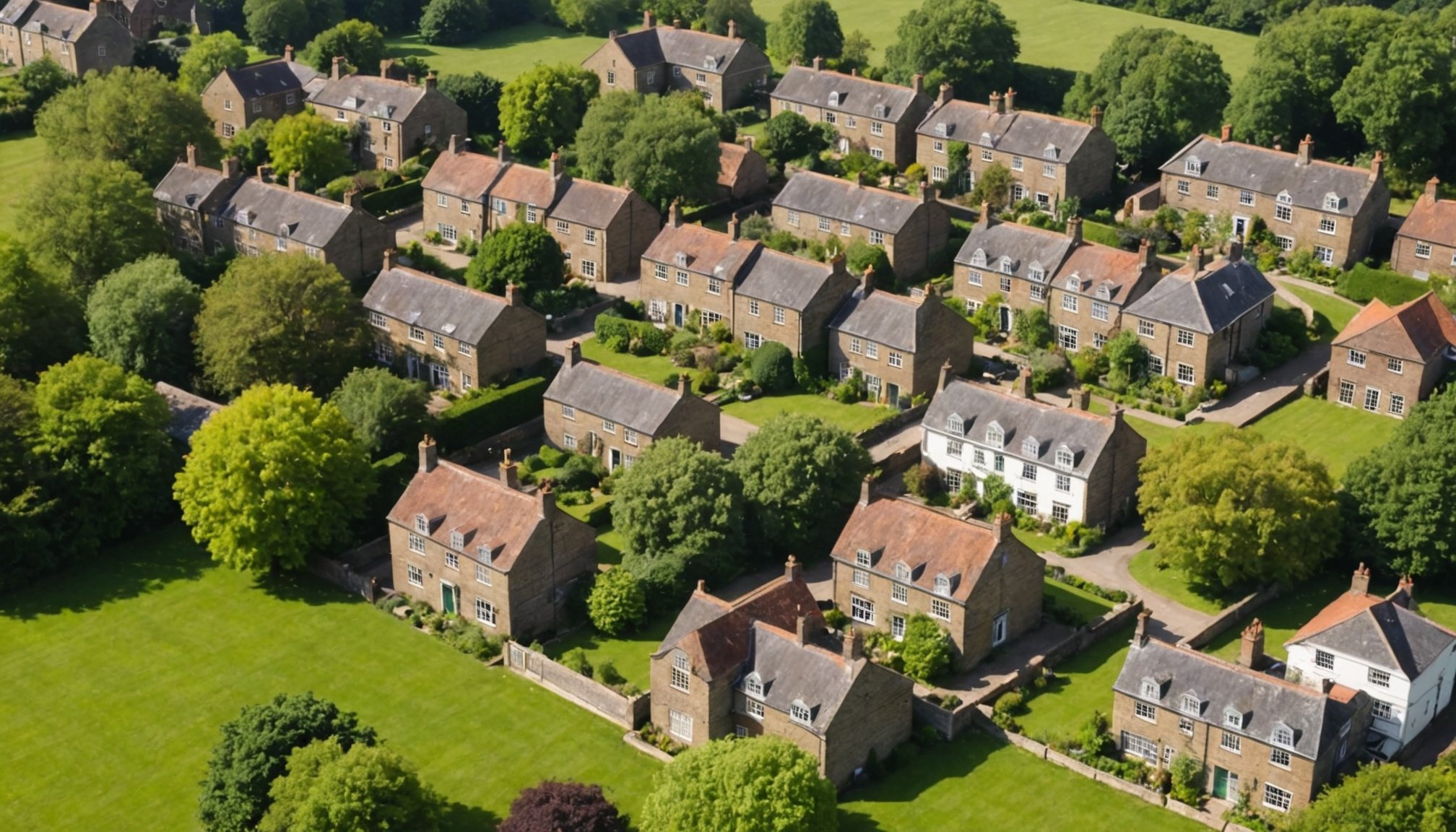Overview of UK Conservation Area Regulations
In the United Kingdom, conservation areas play a crucial role in maintaining the historical and architectural character of designated regions. These areas are established to preserve or enhance buildings, streets, and landscapes deemed of special interest. Understanding the implications of UK property laws in these areas is essential for both property owners and potential buyers.
A key legislative framework governs conservation areas, primarily through the Planning (Listed Buildings and Conservation Areas) Act 1990. This legislation provides local authorities the power to designate conservation areas and impose restrictions on property alterations that could affect the area’s character. Property owners must seek permission for significant external changes, ensuring compatibility with the area’s valued features.
In parallel : Unlocking Financial Benefits: The Perks of Collaborative Property Investment in the UK
One of the pivotal considerations within conservation area regulations is the financial obligations for property owners. These can include the costs of obtaining necessary permissions and potential adjustments to proposals to meet stringent requirements. Failure to comply may result in penalties or enforced restoration to a compliant state.
Moreover, these regulations recognize the balance between preservation and modern living. They enable upgrades like energy efficiency improvements, provided they do not compromise historical value. Understanding these rules is vital for protecting heritage while allowing for responsible development within the UK.
Have you seen this : Top Insurance Solutions for Dual-Use Properties in the UK: Combining Home and Office Coverage
Financial Responsibilities of Property Owners
Being a property owner involves a range of financial obligations essential for maintaining the property’s value and compliance with regulations. Owners must budget for regular upkeep such as repairs, property taxes, and insurance. These general expenses ensure the property remains in good condition and is thus less likely to depreciate over time.
When properties are within a conservation area, additional costs can arise. These areas have regulations that aim to preserve the location’s character and environment. Compliance may include maintaining specific architectural styles or using approved materials, which can be pricier. Failure to adhere to these stipulations can lead to fines or mandated corrective work, further adding to expenses.
Ignoring one’s financial obligations could significantly impact property value. Neglecting upkeep can lead to severe deterioration, lowering marketability and appeal. Furthermore, if conservation area regulations are not followed, the property’s value may decrease due to legal penalties or reduced buyer interest. Financial irresponsibility, therefore, not only risks immediate monetary costs but also a long-term decline in property value, stressing the importance of proactive management. Property owners should remain vigilant and consider the full spectrum of financial responsibilities to safeguard both their investment and the community’s integrity.
Relevant Legislation Affecting Property Owners
Understanding legislation in conservation areas is crucial for property owners in the UK. Various laws dictate the responsibilities and obligations of owning property in these areas, notably the Planning (Listed Buildings and Conservation Areas) Act 1990.
Planning (Listed Buildings and Conservation Areas) Act 1990
This Act is foundational for the protection of properties within conservation areas. It sets the framework for managing alterations to listed buildings and designates areas that require special attention due to their historic or architectural significance. Property owners must navigate restrictions on development, ensuring any changes made respect the character and appearance of the site. Failure to comply can result in legal consequences, emphasising the importance of understanding these requirements.
National Planning Policy Framework
The National Planning Policy Framework (NPPF) offers overarching guidance on sustainable development. It encourages preserving and enhancing historic environments, urging local planning authorities to balance conservation with the need for growth. This framework influences local policies, impacting permissions and obligations for owners in conservation areas.
Local Authority Conservation Area Appraisals
Local authorities conduct Conservation Area Appraisals to evaluate and designate regions of historic interest. These appraisals are pivotal in identifying the characteristics worthy of protection. Local authorities also enforce regulations, ensuring property changes align with conservation objectives. They play a key role in guiding property owners through the legal landscape.
Potential Fines and Fees
Managing a property in a conservation area comes with considerable responsibilities. Property owners should be aware of the potential fines and penalties for non-compliance. Unauthorized alterations, such as changing the exterior of a building without permission, can result in significant fines.
Such fines for unauthorized alterations are designed to deter individuals from making changes that could harm the character and historical value of a conservation area. It is crucial for property owners to seek appropriate permissions before undertaking any modifications.
Moreover, penalties for non-compliance extend beyond unauthorized alterations. Property owners may also face consequences if they fail to maintain property standards. This means neglecting necessary upkeep or allowing the property to fall into disrepair could result in fines. It’s essential to ensure that the property retains its intended appearance and condition.
For those who find themselves facing fines or penalties, there is a legal recourse available. Property owners have the right to appeal decisions, which involves presenting their case to demonstrate any misunderstandings or mitigating circumstances. Understanding these processes and the associated time limits is imperative to build an effective appeal.
By staying informed and proactive, property owners can effectively navigate the complexities of living within a conservation area and avoid unnecessary penalties.
Guidelines for Maintenance and Alterations
When residing in a conservation area, following property maintenance guidelines is crucial. These areas are established to preserve the historical and architectural significance, and maintaining the integrity is essential for both heritage and local community value. Conservation areas often have stricter controls, so understanding the specific requirements is key to ensuring compliance.
For homeowners considering alterations or renovations, it is important to recognise that changes must align with the area’s character. Recommended practices often include using materials and design styles that match the existing structures. Before commencing any work, it is advisable to consult local authorities or conservation officers to ensure that your plans meet the stipulated conservation area alterations guidelines.
While some modifications might be covered under permitted development rights, these rights can be more limited in conservation areas. Generally, this means that certain types of work that ordinarily don’t require planning permission elsewhere might indeed need it here. For example, changes to window designs or major external work might need approval. By being informed about these regulations, you can adeptly navigate the requirements and respect the spirit of conservation while making necessary home improvements. This ensures that all property alterations are both legally compliant and sympathetically designed.
Budgeting for Conservation Area Obligations
Navigating the financial landscape of owning a property within a conservation area requires careful planning. Understanding and budgeting for property responsibilities is crucial to ensure compliance with legal requirements and maintain the unique characteristics of these areas.
One effective method to estimate potential costs is to familiarize yourself with local guidelines and potential restrictions. By understanding the specific obligations involved, you can avoid unexpected expenses. For instance, repairs or modifications may necessitate using traditional materials or specialist craftsmen, which can significantly increase costs.
Creating a comprehensive maintenance budget is essential. Start by itemizing expected expenses such as regular upkeep, potential restoration projects, and compliance-related costs. Allocating funds specifically for these purposes ensures that financial resources are available when needed, avoiding strain on your other finances.
Engage in financial planning strategies tailored for conservation area properties. Consider setting aside a percentage of the property’s value annually, which can serve as a contingency fund for any unforeseen expenses. Additionally, investigating available grants or financial assistance programs that support conservation efforts could alleviate some financial pressure.
By proactively budgeting for conservation area expenses, property owners can secure the necessary resources to meet obligations while preserving the essence of their property’s unique surroundings.
Case Studies and Practical Examples
Exploring real-life property owner case studies offers valuable insights into navigating financial obligations within conservation areas. These examples demonstrate both the challenges and achievements achievable through strategic planning and dedication.
One noteworthy case involves a property owner who faced significant challenges due to unexpected financial burdens. Through meticulous budgeting and prioritization, they successfully managed to meet compliance requirements while maintaining the integrity of their property. This illustrates the importance of planning ahead and understanding the potential cost implications associated with conservation obligations.
In contrast, not all property owners have navigated these waters successfully. Some case studies of non-compliance reveal costly repercussions, including legal penalties and devaluation of property. These cautionary tales serve as a reminder of the importance of adhering to regulations to avoid long-term financial and legal issues.
On a more positive note, there are success stories highlighting effective compliance. These typically involve proactive property management, collaboration with conservation specialists, and an informed approach to meeting maintenance standards. Such stories demonstrate the benefits of early engagement and open communication, paving the way for harmonious living in conservation areas.
By applying the lessons learned from these diverse practical compliance examples, property owners are better equipped to make informed decisions, fulfilling conservation responsibilities efficiently and effectively.
Resources for Property Owners
Maintaining property in a conservation area can be daunting, but numerous resources are available to provide guidance and support. Property owners can benefit from both governmental and non-governmental resources. Local authorities are a primary point of contact for guidance, offering expertise specific to the area’s regulations and requirements. Additionally, heritage organizations often provide detailed information and assistance related to property conservation.
For instance, you can contact your local council to access specific contact information. They can direct you to the relevant departments or provide websites that offer comprehensive resources. Engaging with these authorities will ensure you’re informed about current regulations and any changes that may affect your property.
To enhance community engagement, property owners should consider joining online forums and communities dedicated to conservation area support. These platforms allow for sharing experiences and advice, creating a community of support. Such interaction not only helps in dealing with immediate concerns but also fosters a deeper understanding of preserving the area’s heritage.
In summary, combining official guidance with community knowledge can empower property owners to manage their responsibilities effectively. Embrace these resources to make informed decisions while preserving the charm and value of your property.











